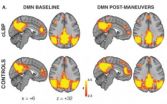(Press-News.org) December 20, 2012, Shenzhen, China – BGI today announces the online publication in Science of the latest findings through genomic analysis of two distantly related bat species, the Black flying fox (Pteropus alecto) and David's Myotis (Myotis davidii). The work here provides new insight into the genetic mechanisms underlying the evolution of flight and immunity of bats, and also opens the way for addressing major gaps into understanding of bat biology and provides new directions for future research.
Bats are often characterized as creepy, disease-carrying, and even blood-sucking animals as often depicted in horror movies. The centuries of myths and misinformation make them one of the least studied and most misunderstood animals. However, in recent years, more and more scientists have been irresistibly attracted to their specific traits, such as the capacity for sustained flight, and the feature that bats could coexist with some of the world's most deadly viruses, such as Nipah, Hendra, Ebola and SARS.
To identify genetic changes associated with the development of bat-specific traits, researchers from BGI, CSIRO Australian Animal Health Laboratory, and other institutes, performed whole genome sequencing and comparative analysis of two different wild-caught bats. They found the two bat genomes were smaller in size than other mammals, but the number of genes was similar to others. This team work yields a valuable genomic resource for unveiling some of the biological mysteries of bats.
The origin of bats has been one of the most discussed topics by scientists in recent years. Until the late 1980s, most researchers assumed that the order Chiroptera was monophyletic and that all bats shared a common flying ancestor. However, another commonly cited hypothesis suggests that megachiropterans (members of the family Pteropodidae) are more closely related to dermopterans (flying lemurs) and primates than to echolocating microchiropteran bats.
Although the true origin of bats remains unresolved to date, the whole-genome sequencing analysis in this study confirmed that bats do share a common ancestor. Our study also indicated that bats are a member of Pegasoferae, and it diverged from the Equus (horse) lineage approximately 88 million years ago (MYA). Interestingly, the phylogenetic reconstruction with mitochondrial DNA resulted in bats occupying an outlying position in Laurasiatheria. The incongruence between nuclear and mitochondrial trees may reflect rapid evolution of the mitochondrial genome of the bat ancestor during the evolution of flight.
To identify mechanisms that facilitated the origin of flight in bats, researchers investigated the genes involved in detection and repair of genetic damage. An unexpected concentration of positively selected genes was found in the DNA damage checkpoint/DNA repair pathway of the bat ancestor, such as the gene ATM, DNA-PKc, RAD50, KU80, and MDM2. They proposed that the changes may be directly related to minimizing/repairing the negative effects of reactive oxygen species (ROS) generated as a consequence of flight. In addition, they also found unique changes in other flight-related genes in the bat ancestor, such as the gene COL3A1, involved in skin elasticity, and CACNA2D1, which has a role in muscle contraction.
Bats have a strong ability to control a variety of deadly microorganisms. When examining the genes associated with the innate immune system of bats, the team identified positively selected genes including c-REL, a member of the NF-kB family of transcription factors. In addition to diverse roles in innate and adaptive immunity, c-REL plays a role in the DNA damage response that has an important function in host defense and is a known target for virus interaction. Researchers inferred that the immune system of bats likely has been influenced by the changes in DNA damage response mechanisms during selection for flight.
Natural Killer (NK) cells provide the first line of defence against pathogenic microorganism and included two families of NK cell receptors, killer-cell immunoglobulin-like receptors (KIRs) and killer cell lectin-like receptors (KLRs, also known as Ly49 receptors). In this study, researchers found KLRs and KIRs were entirely absent in the Black flying fox and reduced to a single Ly49 pseudogene in David's Myotis. Moreover, KIR-like receptors identified in other species were also absent from both Black flying fox and David's Myotis genomes. According to the findings, researchers suggested that bat NK cells use a novel class of receptors to recognize classical MHC- I molecules, one of two primary classes of major histocompatibility complex (MHC) molecules.
Differences between the Black flying fox and David's Myotis also exist in the aspects of feeding habit, hibernation and echolocation, among others. In the study, researchers found the digestive enzyme RNASE4 in David's Myotis may be involved in virus resistance, but the gene has acquired a frame-shift mutation in Black flying fox. This finding also relates to the fact that David's Myotis is insectivorous, and Black flying fox feeds on fruits, flowers and nectar. In addition, they observed six candidate genes related to hibernation showing positive selection in David's Myotis relative to non-hibernators, and seven genes related with echolocation had significantly higher dN/dS in the echolocating David's Myotis branch relative to non-echolocating branches.
"The rapid development of genomics greatly enhances our understanding to the mysteries of evolutionary biology, such as the origin, differentiation, and species diversity." said, Guojie Zhang, Project Manager from BGI, "These wonderfully diverse bats are in a special position in the evolutionary processes, and have some fascinating biological characteristics, including sustained flight, hibernation, echolocation, among others. Genomics is one of the approaches to conduct those studies. I believe the data generated in the study will lay a solid foundation for the further functional research. The genomic comparative analysis also will provide important tools for further understanding the autoimmune system of bats and the relevant defense mechanisms against viral infections."
###
About BGI
BGI was founded in 1999 with the mission of being a premier scientific partner to the global research community. The goal of BGI is to make leading-edge genomic science highly accessible through its investment in infrastructure that leverages the best available technology, economies of scale, and expert bioinformatics resources. BGI, which includes both private non-profit genomic research institutes and sequencing application commercial units, and its affiliates, BGI Americas, headquartered in Cambridge, MA, and BGI Europe, headquartered in Copenhagen, Denmark, have established partnerships and collaborations with leading academic and government research institutions as well as global biotechnology and pharmaceutical companies, supporting a variety of disease, agricultural, environmental, and related applications.
BGI has established a proven track record of excellence, delivering results with high efficiency and accuracy for innovative, high-profile research which has generated over 250 publications in top-tier journals such as Nature and Science. These accomplishments include sequencing one percent of the human genome for the International Human Genome Project, contributing 10 percent to the International Human HapMap Project, carrying out research to combat SARS and German deadly E. coli, playing a key role in the Sino-British Chicken Genome Project, and completing the sequence of the rice genome, the silkworm genome, the first Asian diploid genome, the potato genome, and, most recently, have sequenced the human Gut metagenome, and a significant proportion of the genomes for 1,000 genomes. For more information about BGI please visit www.genomics.cn.
Media Contact:
Bicheng Yang
Public Communication Officer
BGI
+86-755-82639701
yangbicheng@genomics.cn
www.genomics.cn
Boston – More than 100 million Americans suffer from chronic pain. But treating and studying chronic pain is complex and presents many challenges. Scientists have long searched for a method to objectively measure pain and a new study from Brigham and Women's Hospital advances that effort. The study appears in the January 2013 print edition of the journal Pain.
"While we need to be cautious in the interpretation of our results, this has the potential to be an exciting discovery for anyone who suffers from chronic pain," said Marco Loggia, PhD, the lead author of the ...
On April 22, 2012 a very fast-moving fireball was observed over large parts
of California and Nevada. Equivalent to four kilotons of TNT, the fireball was photographed, and recorded by video and by weather Doppler-radars. The photographs and videos helped to trace back its orbit to the far reaches of the outer part of the asteroid belt. The radar data helped meteorite hunters to recover a total of 77 specimens, with the first ones found only two days after the fall. The meteorite was named Sutter's Mill, after the location where it fell. (Interestingly, Sutter's Mill ...
ANN ARBOR, Mich. — From the moment a stroke occurs, patients must race against the clock to get treatment that can prevent lasting damage. Now, a new study shows the promise – and the challenges – of getting them state-of-the-art treatment safely at their local hospital, saving precious minutes.
The results come from an effort that tested methods to improve delivery of a time-sensitive, clot-busting drug in stroke patients at 24 community hospitals across Michigan. To date, clot-busting treatment has been mostly used at larger hospitals.
The research effort was coordinated ...
Durham, NC — Deep in the scrublands of Keoladeo National Park in northwest India, one thing was hard for biologist Jessica Yorzinski to ignore: It wasn't the heat. It wasn't the jackals. It was the squawks of peacocks in the throes of passion.
From behind the trees in the distance, she could hear a loud two-part whoop, the distinctive call that male peacocks make right before mating.
During the peacock courtship dance, a male announces that he's ready to make his move by dashing towards the object of his affection and emitting a singular squawk before mounting his ...
UNIVERSITY PARK, Pa. -- Not all video game players are destined for lives filled with failing relationships and dwindling friendships, according to Penn State researchers, who say that a lot depends on the role of the game-playing activity in the gamer's life.
"There's a common stereotype that if you play video games, then you are a loner," said Benjamin Hickerson, assistant professor of recreation, parks and tourism management. "But it may have more to do with how a person is involved in gaming that determines how their social support is affected."
In a study of people ...
Growing new blood vessels in the lab is a tough challenge, but a Johns Hopkins engineering team has solved a major stumbling block: how to prod stem cells to become two different types of tissue that are needed to build tiny networks of veins and arteries.
The team's solution is detailed in an article appearing in the January 2013 print edition of the journal Cardiovascular Research. The article also was published recently in the journal's online edition. The work is important because networks of new blood vessels, assembled in the lab for transplanting into patients, ...
New York, NY (December 20, 2012) — Two recent experimental treatments — one involving skin-derived induced pluripotent stem (iPS) cell grafts, the other gene therapy — have been shown to produce long-term improvement in visual function in mouse models of retinitis pigmentosa (RP), according to the Columbia University Medical Center (CUMC) scientists who led the studies. At present, there is no cure for RP, the most common form of inherited blindness.
"While these therapies still need to be refined, the results are highly encouraging," said Stephen H. Tsang, MD, PhD, associate ...
Cyclone Evan is no more than a remnant low pressure area in the South Pacific Ocean now. NOAA's GOES-15 satellite captured an image of the remnants from its fixed orbit in space on Dec. 20 that showed strong wind shear had basically blown the storm apart.
The last official bulletin by the Joint Typhoon Warning Center was issued on Dec. 19 at 2100 UTC (4 p.m. EST/U.S. or 12:56 a.m. Fiji local time on Dec. 20). At that time, Evan's maximum sustained winds were still near 35 knots (40 mph/64.8 kph) and it had transitioned into an extra-tropical storm. It was located 400 ...
An oversized semi-trailer truck carrying NASA's Landsat Data Continuity Mission (LDCM) has arrived at its launch site at Vandenberg Air Force Base in California in preparation for launch. This NASA and U.S. Geological Survey mission will continue a 40-year record of measuring change on the planet from space.
LDCM is the eighth satellite in the Landsat series, which began in 1972. It will extend and expand global land observations that are critical in many sectors, including energy and water management, forest monitoring, human and environmental health, urban planning, ...
PHILADELPHIA — The protein kinase Akt is a key regulator of cell growth, proliferation, metabolism, survival, and death. New work on Akt's role in cancer stem cell biology from the lab of senior author Honglin Zhou, MD, PhD and Weihua Li, co-first author, both from the Center for Resuscitation Sciences, Department of Emergency Medicine, Perelman School of Medicine, University of Pennsylvania, and Xiaowei Xu, Department of Pathology and Laboratory Medicine, appears in Molecular Cell. The findings were also highlighted in Nature and Science reviews.
This new research shows ...





